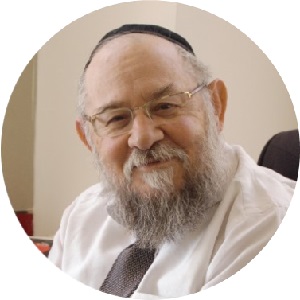Recalculating

While Am Yisrael was on the cusp of experiencing the redemption from Egypt, what was the point of giving them a commandment to sanctify the months? On first glance, it seems to be missing the main event
“T
his month shall be to you the head of months.” On the threshold of their departure from Egypt, why did Hashem make sanctifying the month Am Yisrael’s very first mitzvah, amid all the bustle and turmoil of those moments before geulas Mitzrayim? One would think that the second mitzvah, the mitzvah of Korban Pesach and all its accompanying instructions, ought to come first — rather than a mitzvah for the future, teaching the Jewish People.
Yet Hashem, in His infinite wisdom, gave the mitzvah of hachodesh hazeh to Bnei Yisrael precisely at this juncture in order to impress upon them what it truly means to be a ben chorin. Through this mitzvah, He provided them with the means of preserving their freedom forever — not physical freedom, but spiritual freedom. Because internalizing the message of this mitzvah is a protection from the danger that would lay in wait for them as they take their first steps as a redeemed nation.
Chazal speak of this mitzvah as a clock:
“Rabi Yehoshua ben Levi said, ‘It can be compared to a king who had a timepiece, which he would look at and know the hour of the day. When his son came of age, he gave him this timepiece. So did HaKadosh Baruch Hu say: Until now, the calculation of months and years was in My hands; from now on, it is handed over to you. If you say yes, then yes. If you say no, then no. In any case, this month shall be to you the head of months” (Yalkut Shimoni,pParshas Bo, 190).
You, the Jewish People, says HaKadosh Baruch Hu, are now in charge. It is your job to determine the starting point of every new month, and all the dates on the calendar will follow accordingly.
On a basic technical level, this mitzvah involves a complex and sophisticated set of astronomical calculations by which the months and seasons of the Jewish year are determined. The Torah says of this set of calculations, “For that is your wisdom and understanding in the eyes of the peoples” (Devarim 4:6). The Jewish calendar is indeed more complex than any other. While the calendar used by the Christian world is based on the cycle of the sun as viewed from Earth, and the Muslim calendar is based on the cycle of the moon, our Jewish calendar is built on a combination of both cycles.
This was a feat that required extensive knowledge of astronomy and very precise calculations. Today, in this age of satellites and atomic clocks, state-of-the-art measuring tools sent into space have proven that the Talmudic calculation regarding the length of time from one new moon to the next is exact up to five decimal places (Astrophysicist Carl Sagan, in his book Broca’s Brain, cites the exact figure as measured by modern scientists without mention of the Talmudic numerical calculation, which is almost precisely the same.)
But still, what deep idea underlies the fact that on the threshold of redemption, this astronomy-based mitzvah was given before any other?
Permit me to offer two reasons, both of which have to do with the word lachem, “to you,” in the Torah’s phrase, “This month shall be to you the first of months,” which teaches, as mentioned, that the Jewish nation, through the Sanhedrin, is to be directly involved in determining the times of the months and the festivals. The beis din in Jerusalem was required to declare the beginning of a month according to the testimony of the witnesses who first observed the new moon, as described in Maseches Rosh Hashanah.
Why was this momentous task — this very first mitzvah on the cusp of the Exodus — handed over to the Jewish people themselves? Rav Samson Raphael Hirsch offers a profound explanation:
“If the starting point for the months, and the ensuing holidays, were linked with precision to periods of time based on planetary, astronomical movements, such that the cycle of the moon by itself would automatically determine the timing of the new month and the holidays, then both we and G?d would be subject, as it were, to the forces of nature. And in that case the observance of Rosh Chodesh would have been a serious aid to the idolatry of nature worship” (Rav Hirsch on the Parshah).
The mitzvah of declaring the new month taught the Jew that from here on, the laws of nature would not be absolutely binding. By Divine decree, we are not subject to them, rather they are subject to us, thus expanding our understanding of bechirah chofshis: G-d has granted us the power to determine our ultimate fate by our moral conduct. If we choose to live by the Torah’s dictates, all will turn out well for us. The powers invested in nature have no sovereignty over us. Thus, Bnei Yisrael savored the taste of true liberty just prior to their redemption from the influence of the Egyptian culture, which was totally subjugated to the forces of nature.
Furthermore, in Temple times, although the Sanhedrin knew by the calculations when the molad was, they had to wait for witnesses to come to the beis din and testify that they had seen a thin sliver of the new moon. Just imagine the excitement, suspense, and anticipation that seized the people at the end of every month, as they all turned their gaze skyward, looking for that sliver of moon.
But the obvious question is, if Chazal knew how to calculate the exact time of the new moon, why didn’t they simply announce it? Why all the drama and interrogation of witnesses?
Because the excitement surrounding the sanctification of the new month was the whole point.
When they emerged en masse from Egyptian bondage, they savored the wonderful taste of renewal and an unparalleled sense of closeness to HaKadosh Baruch Hu. The worst thing that could happen to them would be to lose that feeling and fall into the trap of robotic observance, detached from the heart and the senses, as described by the navi: “For this people has come forward; with its mouth and its lips they have honored Me, but its heart is distant from Me, and its fear of Me has become a matter of routine” (Yeshayahu 29:13).
As a young yeshivah bochur, I once heard from the unforgettable mashgiach Rav Gedaliah Eisemann ztz”l, that before he fled to Eretz Yisrael, he himself heard from gedolim of Europe that one of the causes of the terrible catastrophe that befell Am Yisrael at that time was that too many of the Jews who were still keeping mitzvos had fallen into that very trap of mitzvas anashim melumadah, robotic observance.
The Torah warned against this pitfall: “Ki savo’u el haaretz v’noshantem — When you will be long established in the land” (Devarim 4:25). The Hebrew v’noshantem connotes age and lack of freshness. Habituation to the mitzvos will cause you to sink into a static routine. Your performance of mitzvos will become something merely technical, lacking in spirit, and this leads to ruin. The Torah came and placed this mitzvah first among the mitzvos in order to give us a model of constant renewal, to impress upon us the necessity of constant renewal in all of the mitzvos. As Rav Hirsch puts it, every month the Jew will feel once again “a rebirth out of the darkness of fixed ideas and decadence and ensure everlasting freshness for truth and purity.”
When the Jewish People anxiously gazed at the sky searching for a slim crescent, they never felt that it was just one more repetition of a monthly routine. That mitzvah was given before all others in order to imbue all of our mitzvos with that same freshness so many centuries later.
(Originally featured in Mishpacha, Issue 756)
Oops! We could not locate your form.




